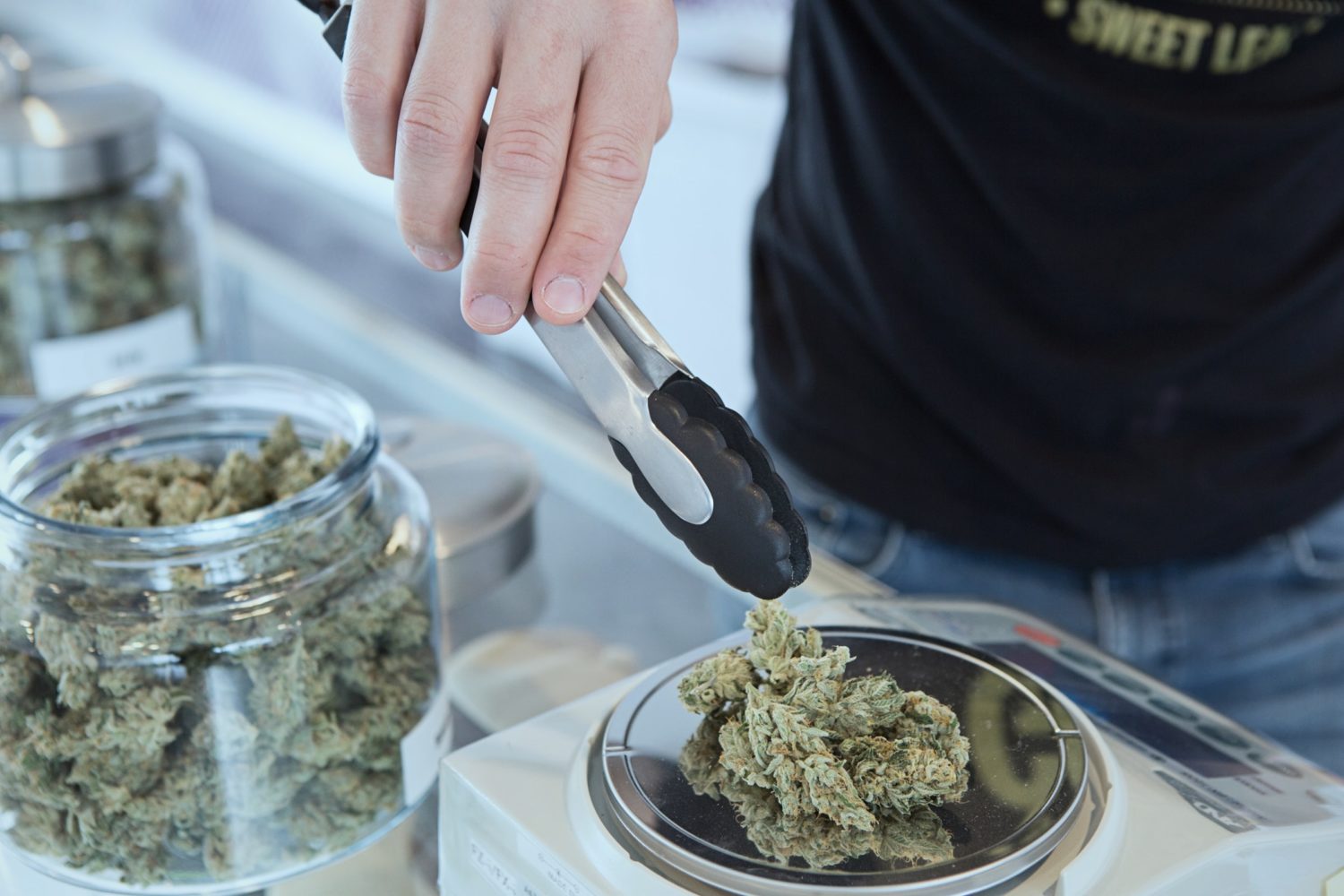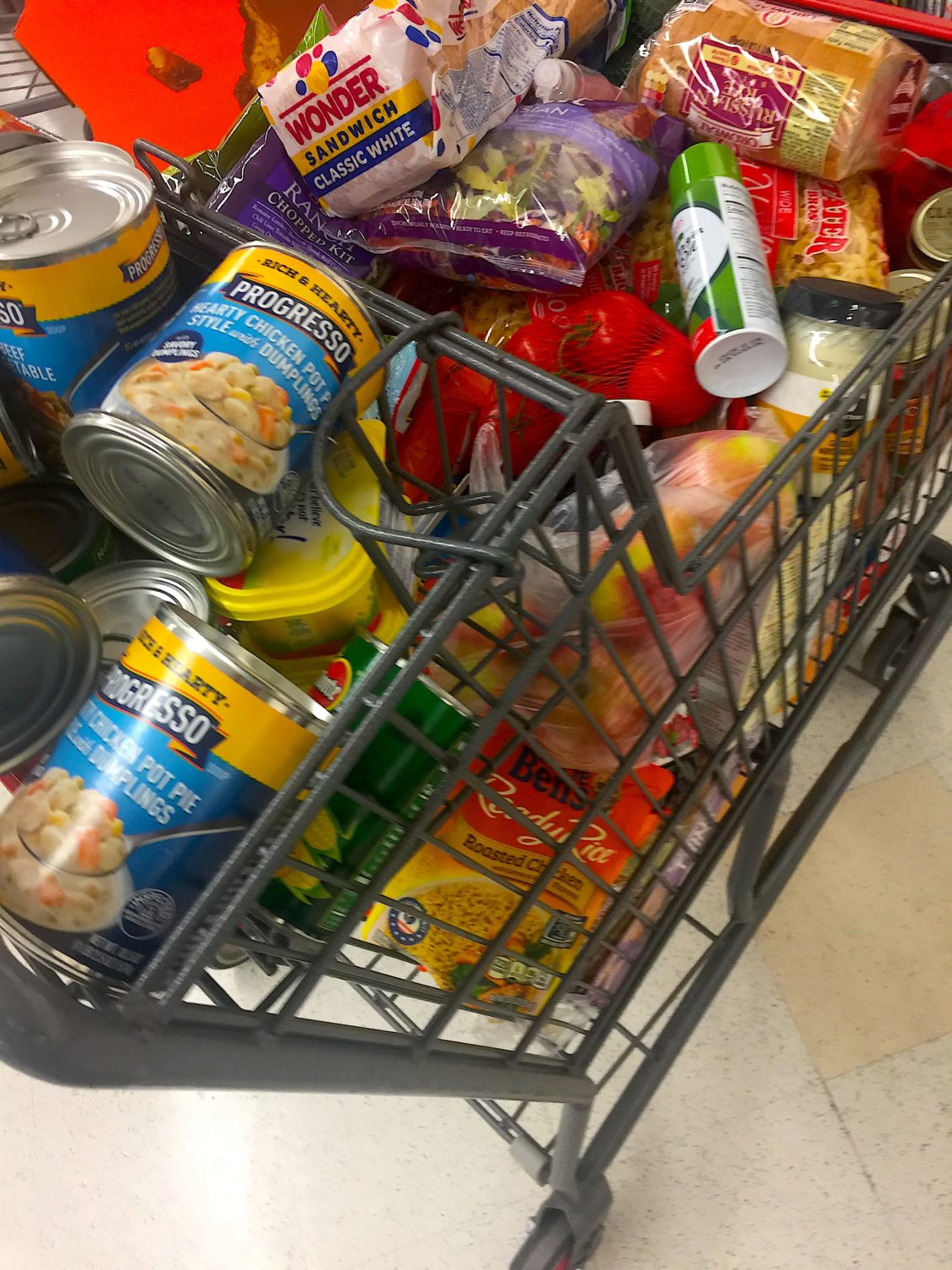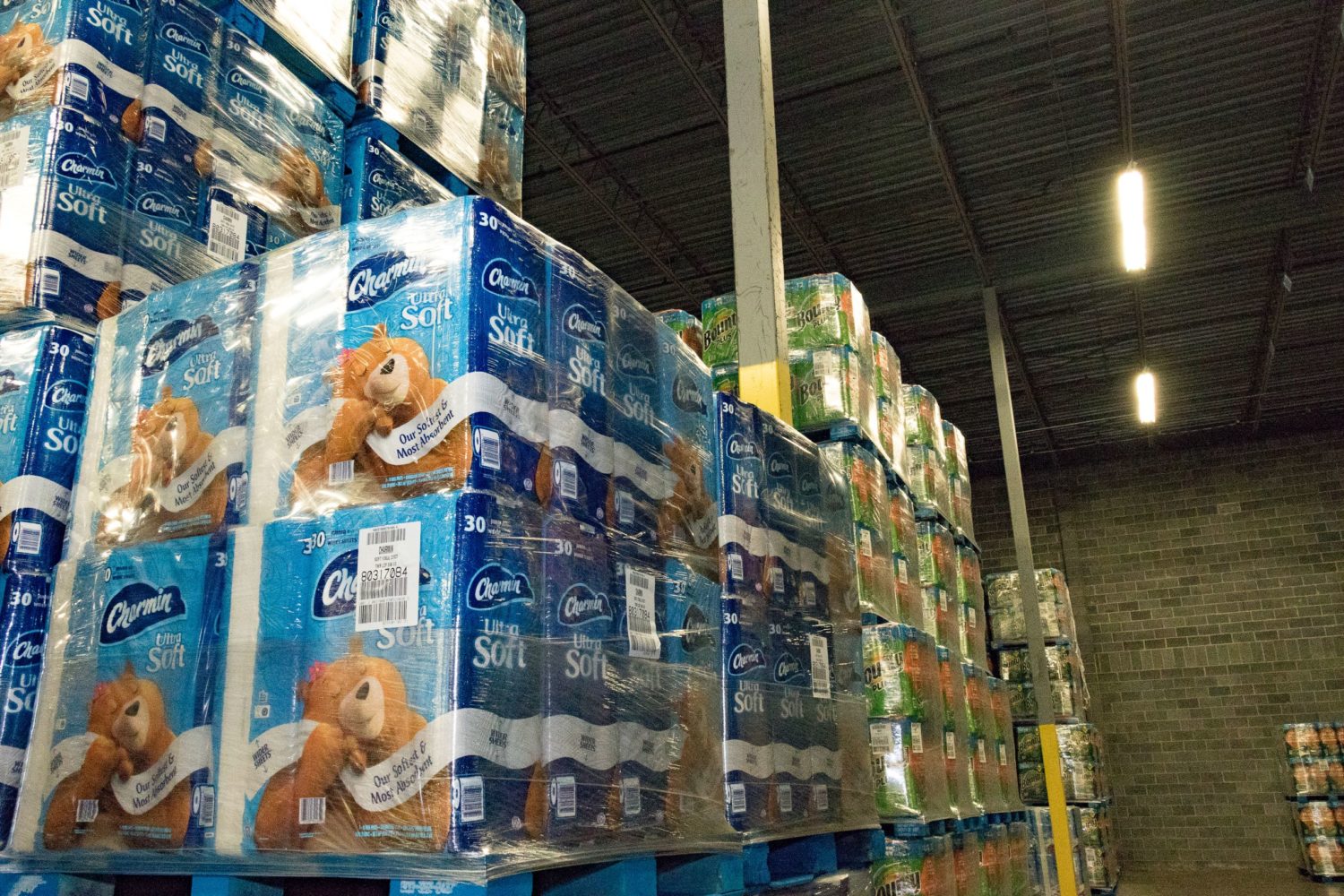With coronavirus and lockdowns taking grip across America, people are rushing to stock their pantry and bathroom for the long haul; we reached out to some big cogs in the supply chain to see how things are locally.
L.A. County health officials have now reported 231 cases and two deaths. COVID-19 is changing the way people live their lives. And with recent news that even two Lakers have tested positive for the virus, at this point, many presume we’ve only scratched the surface of the problem in Los Angeles.
Here is a rundown of how the supply chain looks right now for a lot of the products proving popular for pandemic preppers. The new big four, in no particular order: weed, beer, food and toilet paper. And please don’t be one of those people hoarding these products.

(Add Weed/Unsplash)
Weed
Right off the bat, California does not have the most stable cannabis supply chain of any state with legal marijuana. But Andrew Livingston, the Director of Economics & Research for the nation’s biggest cannabis law practice, Vicente Sederberg, says you don’t have to worry too much compared to other places.
California has a lot of vertically integrated cannabis companies. Those are the companies founded before June of 2016 that are allowed to grow, package, distribute and sell marijuana though their own storefronts. For local examples, think of the Jungle Boys or 3C Farms, who grow the vast majority of their pot at their own facilities, then sell it through their own affiliated storefronts. Not to mention some of the less developed markets could barely keep shelves stocked before things went south in recent weeks.
“California is lucky enough that even though it has major supply chain issues and it’s been a super turbulent transition, there is just more [cannabis growing] out there, there is also obviously way more demand,” Livingston told L.A. Weekly.
Livingston believes while California hasn’t grown enough pot to make prices as competitive as in Colorado, Washington and Oregon, there is still more supply ready for this time of crisis than places like Illinois or Massachusetts.
So despite all the hiccups, it’s fair to say California’s supply chain is better than most right now.
“Yes, that’s just because of the size of the state, right?” Livingston replied. “I would say it’s better than most, but Oregon, Colorado, Washington are in better shape I’d say.”
One outlier is Nevada. Nevada’s cannabis supply chain is essentially designed to feed the demand of Las Vegas. Since Vegas has shut down, Livingston expects locals should be prepared to see some of the most competitive cannabis prices in the country as efforts to stop the spread of coronavirus continue.
For one of the state’s largest cannabis companies, preparations for the expected Chinese New Year delays in the packaging supply chain ended up having them on good footing as things have taken a turn in recent weeks. Cannacraft co-founder and CEO Dennis Hunter told us the state’s move to declare cannabis an essential business has kept the doors open.
“We were fortunate to have a lot of demand planning done, we usually carry eight to 12 weeks of inventory on each [product], so we have quite a bit of a buffer on products in stock,” Hunter said. “It gave us a little bit of room.
Right after Chinese New Year, Hunter started seeing Cannacraft’s first disruptions from the coronavirus. But with the stock, “It hasn’t really interrupted our business right now.”
Another reason for the lack of problems at Cannacraft is how much they stock up in the fall. They process and sit on a lot of oil throughout the year.
We asked if Hunter had any concerns about manpower despite everyone on his team — from the guy labeling the boxes to whoever is driving the product down to L.A. — being allowed to work due to Cannacraft being an essential business?
It doesn’t mean we don’t have disruptions. A lot of our employees are still impacted. They’re taking care of their families.” Hunter elaborated: “If they’re not feeling well or not even feeling comfortable, we’re definitely allowing them to do what they need to feel safe.”
Cannacraft had been able to spread its labor force over multiple daily shifts to give everyone more room. They’re also paying to get the building disinfected four times a day.

(Scott Feinblatt)
Beer
We reached out to the National Beer Wholesalers Association to get their take on the threat to the supply chain. The NBWA’s chief economist, Lester Jones, told us he has faith the supply chain will remain stable.
“We’ve seen many regulatory agencies and state governments quickly adopt rules and regulations to keep beverages moving. Clearly there is a rush to stock pantry shelves by the American consumer,” Jones said. “Beer, in addition to things like tea, soda, water, is finding its way to retailers’ shelves.”
We asked if the run on beer this week basically turned into something similar to one of the big summer BBQ holidays. “Apparently, yes,” Jones replied. But he said people should keep in mind beer is very seasonal and this first quarter of the year is the lowest volume quarter.
One thing the wholesalers will have on their side when trying to stock grocery stores is the large volume of beer from restaurants and bars. Draft beer makes up about 10 percent of the U.S. beer market, and restaurants do another 8 percent of the total volume of beer sales in bottles and cans. That puts on-premise drank beers at 18 percent of the total national market. In the process of explaining the numbers, Jones also conveyed NBWA’s support of the bars, bowling alleys, stadiums and anywhere else you might tip one back that’s shut down — and to their staffs. All in all, only that 10 percent of beer in kegs will really sit around while new rules have made the rest of the stock easier to move.
Jones also doesn’t have concerns at the moment about the manpower the industry relies on being forced to stay home.
“We have a very effective and efficient beer distribution network,” he assured us. “Our beer distributors are practicing all the recommendations about social distancing, telecommuting when they can. There are a lot of best practices being implemented right now.”
Jones again emphasized, in most cases, these distributors were not just beer trucks.
“These are beverage trucks, and keeping our supply chain working and moving is critical to keeping everything going for the economy. The parts of the economy that are working and open for business will continue to be open for business,” said Jones. “We have a really strong distribution system and it goes beyond beer.
Jones believes the government is asking people to physically change the way they live their lives and how they act as consumers. “And beer distributors will be there to help with that transition, whether it’s a month or two months.”
A silver lining: One thing that will help the industry maintain is that breweries are more capital-intensive than labor-intensive. A lot of the automated parts of the supply chain can’t get sick.

(Dan Heck)
Food
The California Grocers Association announced the state’s grocery industry is adapting to heightened consumer demand, stretched supply chains and fluid workforce conditions.
The 120-year-old organization’s membership includes over 300 retailers operating more than 6,000 brick-and-mortar stores, as well as approximately 150 grocery supply companies.
CGA says that COVID-19 has caused demand to surge for a number of grocery items. “In response, California’s grocery industry is working double-time to meet the needs of consumers, with many grocery stores restocking items multiple times each day,” the trade organization noted. “But we are open for business, doubling down on safety practices, and well-positioned to meet the needs of all Californians.”
One of the things that has the grocery industry prepped for the loss of manpower is their standard operating procedures for disaster events like earthquakes and wildfires. CGA said regardless of the number of employees available, grocers will not stop serving our communities.
“We encourage all customers to remain calm as they prepare,” the update read. “Overbuying could become a concern as a customer who buys more than they need could prevent another customer’s preparation.”
The state’s grocers plan to continue monitoring product availability up and down the supply chain but ended on the fact everyone needs to keep it chill. “During these uncertain times, it’s important our communities remember we are in this together — customer and employee safety is paramount to ensuring Californians can access the products they need,” they said.
With the rush on supplies we reached out to Costco to ask how has coronavirus impacted the company’s employees and supply chain. We also asked if they had planned to put limits on the number of shoppers in your store at any given time?
Given the pretty basic questions, the reply was wild.
“As you can imagine, Costco has received several requests from the media for more information about how Costco is handling the surge of interest in purchasing emergency supplies in response to COVID-19, as well as our measures to provide a safe shopping environment,” a Costco Communications staffer who requested not to be named told L.A. Weekly in an email reply. “Costco is not staffed to respond individually to all these questions. As always, our focus is to have merchandise available for our members at low warehouse prices.”
On Sunday, an employee of Costco’s Seattle corporate offices died of COVID-19. Buzzfeed News reports the staff who shared a building with him are still required to go to work to be fair to employees of Costco’s stores, who are also getting sick.
Costco announced in its second-quarter financial statements they believed coronavirus had led to a 3 percent sales bump in the second-quarter numbers.
We also asked Costco what the point of having a communications team was in a time of crisis if they couldn’t answer questions like the ones we asked.
 Toilet Paper
Toilet Paper
Toilet paper quickly became the most famed survival staple of the moment. We reached out to the parent companies of Scott Paper Company and Charmin, Kimberly-Clark and Procter & Gamble, to get their take on how safe the toilet paper supply chain is at the moment.
“We want to assure consumers that we are doing our best to ensure a steady supply of product to stores, and Kimberly-Clark is working closely with our retail partners and customers to understand their current needs.” Kimberly-Clark spokesperson Terry Balluck told L.A. Weekly via email. “We have plans in place to address the increased demand for our products to the extent possible, including accelerating production and reallocating inventory to help meet these needs. We will continue to make adjustments to our plans as necessary.”
But they can’t protect the supply chain if they don’t protect their own workforce, and they are keeping that in mind at every level of the operation. “These measures include enhanced safety measures for our office, mill and distribution center operations, which were developed in line with guidance from global health authorities. These plans also help ensure the continued supply of our essential products.” Balluck explained.
Procter & Gamble is pumping out all their products out at record numbers to keep up with demand. “We are currently producing and shipping P&G Family Care products, including Charmin, at record high levels,” Loren Fanroy of P&G’s family care division told the Weekly.
Fanroy, however, admitted that demand continues to outpace supply, “but we are working diligently to get product to our retailers as fast as humanly possible so everyone can continue to ‘enjoy the Go’.”
(Please take a moment to collect yourself if you laughed as hard as we did.)
“We are prioritizing our bestselling sizes to maximize the amount of product we can ship to retailers, and we remain focused on making sure our products are available when and where people shop during this highly dynamic situation,” Fanroy said. “We can assure you that our supply chain is fully operating and we continue to manufacture and ship Charmin to our retailers.”
Advertising disclosure: We may receive compensation for some of the links in our stories. Thank you for supporting LA Weekly and our advertisers.

